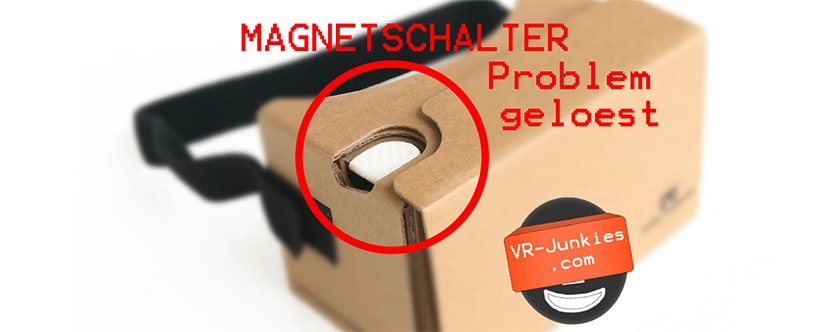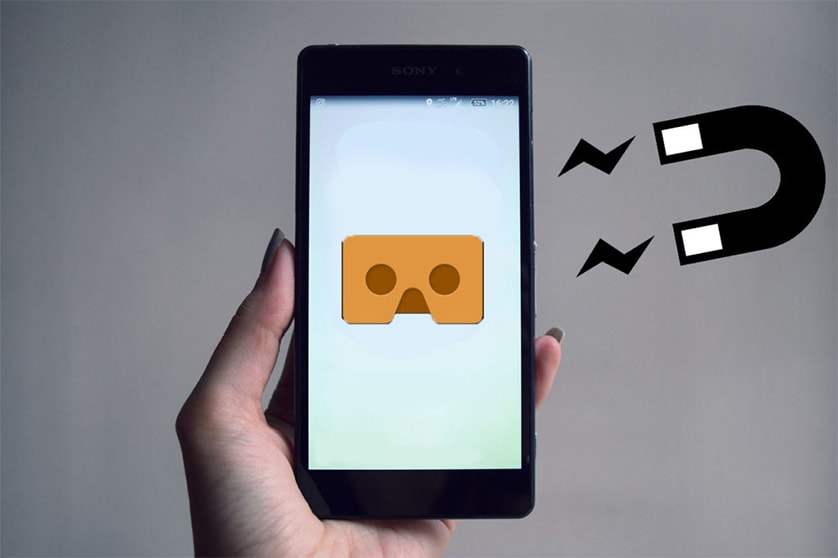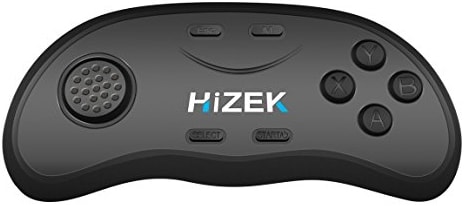VR glasses magnetic switch – where is it? Why don’t I have one? How can I retrofit it?
You are using the Cardboard app from Google and lo and behold: VR glasses magnetic switch? Do you have to click something? A bit awkward when you have to keep opening the VR glasses to insert your finger. Very annoying that even with glasses like Tepoinn 3D VR , ELEGIANT Universal 3D VR or Pasonomi 3D VR no magnetic switch is integrated. But our tinkerers at VR-Junkies.com have found a simple solution that works with all apps. It’s not the most elegant solution, but it works very well to use.

How does the magnetic switch work on VR glasses?
A magnetic switch in VR glasses does nothing other than let a magnetic field act on the smartphone – actually, of course. What happens now if you just hold a magnetic switch to the smartphone? Aha! The built-in compass in the smartphone makes it possible – sudden, magnetic changes are perceived as an interaction – very clever. As simple as it sounds to us, this is the function of magnetic switches. Here’s the trick: if you simply bring a magnet to the back of your smartphone, it creates an interaction. Depending on how the app accesses the compass, this can be any possible interaction. Simple principle, simple solution.

In our test we have started with fridge magnets as a precaution, which are usually well suited as VR glasses magnetic switches . They work better without glasses, but if you put the smartphone in the VR glasses, these magnets are too weak due to the housing of the VR glasses. We then switched to a somewhat stronger magnet for magnetic boards. That worked perfectly. Here’s how you can try it too:
Here is the solution: Retrofit VR glasses with magnetic switches
What you need now is a magnet. Start with a slightly weaker one, such as B. a fridge magnet.
ATTENTION: Do not use magnets that are too strong, this can damage your smartphone!
- Don’t put your smartphone in your VR glasses yet: You have to find out beforehand where the magnet works best on the smartphone.
- Start a VR APP on your smartphone: Start a VR APP that requires one click to interact, such as: Google Cardboard App.
- Aim with the smartphone at a button in the VR APP: Now move the cursor over a button in the app. In the Google Cardboard app, for example, this is the white point. Position this white point over a button.
- Now carefully approach the magnet to the back of your smartphone: The approach of the magnet is basically the same as if you would press the magnet switch on VR glasses. Then move the magnet away again. If the smartphone does not respond, try to “scan” the back of your smartphone with the magnet until you have found the right place where the compass is in the smartphone. You can also try to see if it works better for you by swiping the magnet across the back of the smartphone.
- Make a note of where the magnet works best: Did you find the right job? Very good!
- Put the smartphone in your VR glasses.
- Now move the magnet to the place where an interaction previously worked.
- It does not work? Try a stronger magnet ( ATTENTION : As mentioned earlier, you shouldn’t use a magnet that is too strong. This can possibly damage your smartphone.)
If you still dare to do handicrafts, you can attach the magnet to a metal spring and then attach it to the VR glasses. This results in a device whereby the magnetic switch is easily replaced. Note: You should be careful about how you insert your smartphone. In most cases, the magnetic sensor is attached below the smartphone. If you now turn your smartphone around, the magnet will of course no longer have any effect at the point previously attached.
Why is the magnetic switch missing from so many VR glasses?
When Google published its production instructions for manufacturers of VR glasses, there was no magnetic switch in the first version. The control of the apps was solved differently at the time. At that time, many manufacturers had many of their own VR glasses produced. The production was perfected to build large numbers of this variant without a magnetic switch. Suddenly the Google Cardboard 2.0 came along. Suddenly a feature was added: a magnetic switch should increase the VR experience.
Here’s the problem: Google has also adapted its Cardboard app to this magnetic switch. Suddenly you could no longer operate the Google Cardboard app with most VR glasses. What a shame. Nevertheless, manufacturers have still had VR glasses produced without a magnetic switch.
The use of magnetic switches is no longer recommended by Google. We can also imagine why: With many VR glasses that have an integrated magnetic switch, the switch stopped working after a while. This phenomenon probably arises because the strength of the magnets in the magnetic switches decreases over time and therefore no effect can be achieved when switching.
Cardboard magnetic switch no longer works
We have often heard reports that the magnetic switches no longer work on some VR glasses. With our tip, a magnet can also be used here.
It works best with the good old remote control
No matter what experience we have had so far, the easiest and most comfortable solution was still remote controls: VR glasses remote control

The latest VR glasses do not have magnetic switches, but switches that work with NFC. In times like these, every smartphone should have an NFC sensor. Google recommends VR glasses manufacturers stop using magnetic switches. Reasons are not given, however we suspect that the above issues lead to this recommendation.
Which smartphones are best for VR?
Here’s a list of smartphones that are best suited for VR: The best VR smartphones (cardboard)
